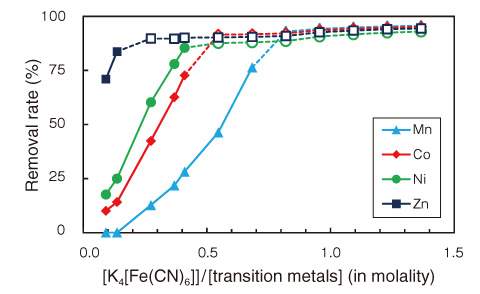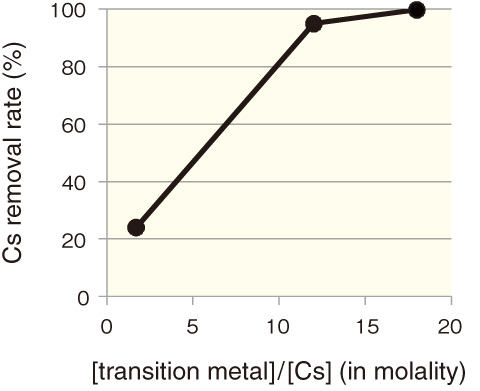
Fig.1-42 Simplified treatment process experiment

Fig.1-43 Effect of ratio of hexacyanoferrate/transition metals on removal rate of transition metals

Fig.1-44 Increase of Cs removal rate
At the TEPCO’s Fukushima Daiichi NPS (1F), an enormous volume of contaminated water has been generated by reactor cooling and groundwater inflow, and is temporarily stored at the site. The contaminated water bears not only fission products from the spent fuels, such as cesium (Cs), but also activated corrosion products from the reactor materials, such as manganese (Mn) and cobalt (Co).
Adsorption with insoluble hexacyanoferrate(II) is a well-known method of removing radioactive Cs from liquid waste. For radioactive Mn and Co decontamination, co-precipitation with iron hydroxide is generally used. In fact, part of the contaminated water was actually treated by applying these methods at 1F.
It is known that the insoluble transition metal hexacyanoferrate(II) selectively adsorbs Cs among alkaline elements. Hexacyanoferrate(II) of Ni, Co, and Fe are typical compounds used to adsorb Cs, and they are products of the reaction of hexacyanoferrate(II) ions and transition metals. In iron co-precipitation, transition metals are co-precipitated with iron hydroxide, which is a product of the reaction with iron ions and hydroxide ions, because of their chemical similarity.
We developed a simplified treatment process for both radioactive transition metals and Cs decontamination. Fundamental experiments using both non-radioactive and radioactive solutions were conducted. As shown Fig.1-42, the treatment process consists of two reactions. The first reaction is in-situ generation of the transition metal hexacyanoferrate(II) by adding potassium hexacyanoferrate(II) solution to the contaminated water. The second reaction is Cs adsorption on the first reaction product.
The properties of the in-situ generation of insoluble hexacyanoferrate(II) adsorbent were examined using non-radioactive transition metal elements. As shown in Fig.1-43, the removal rate rose as the ratio [K4[Fe(CN)6]]/[transition metal] increased. For [K4[Fe(CN)6]]/[transition metal] > 1, the removal rates of transition metals were greater than 90%.
The Cs adsorption was also examined to investigate the removal rate of Cs. As shown in Fig.1-44, the removal rate of Cs was 95% when [transition metal]/[Cs] was 12. The removal rate of Cs reached 99% when [transition metal]/[Cs] was 18.
These results show that this new treatment process has the potential to remove both radioactive transition metals and Cs effectively when the ratio of Cs and transition metals is appropriate for the reactions.
At 1F, contaminated water has been treated by other treatment processes. We hope that our proposed process will be applied for the removal of Cs and transition metals from radioactive liquid waste in various decontamination processes in and around 1F.